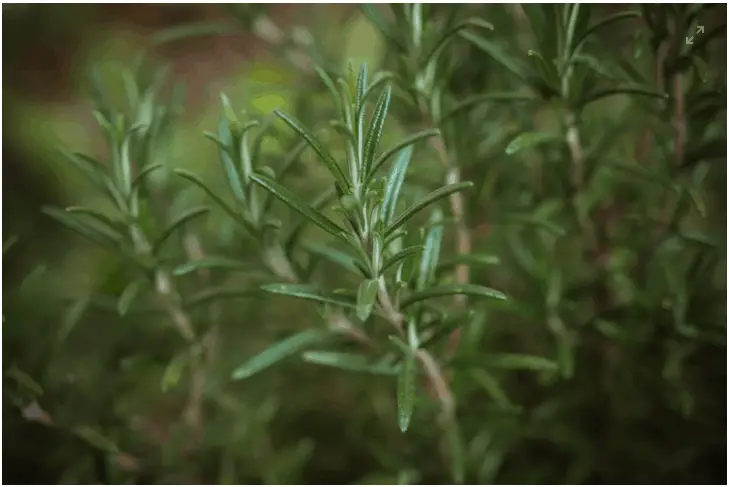
If you are in the middle of a cooking frenzy and are all out of sage, worry not- there are many easily available substitutes. The most common equivalents of sage include thyme, marjoram, oregano, rosemary, and poultry seasoning.
It happens to the best of us. You are in the middle of roasting some creamy butternut squash or sauteeing a slice of buttery sea bass before you reach into your spice rack for some sage, only to discover you’re all out. Fortunately, there are several readily available spices from your kitchen that can be a solid substitute for sage.
But before we buckle down the list of sage substitutes, let’s check out the flavor profile of sage and some interesting advice regarding using sage in your cooking. As you become more experienced with cooking, you should use your instinct while substituting ingredients in the kitchen.
The Flavor
So what is it that makes sage stand out? This soft, leafy green herb has a minty, earthy flavor profile stronger than most other herbs of the mint family. It adds notes of pine and eucalyptus and a hint of bitterness that works excellently with garlic, onion, dairy, and a variety of meats. Sage brings an intense aroma that pairs well with pumpkins, sauteed mushrooms, fatty meats, and pasta sauces. Arguably, one of the most wholesome ways to relish sage is with some hearty butternut squash puree.
You can typically find sage in supermarkets either dried, rubbed or fresh. When cooking with fresh sage in the kitchen, it is best to add when your cooking has almost come to an end. This is to avoid the sage from burning and developing a bitter taste. Conversely, dried sage should be added towards the beginning of your cooking so the flavor doesn’t overpower the recipe. Rubbed sage is ideal for rubbing and seasoning your meats and works well as a seasoning for stuffing. Rubbed sage should also be used at the beginning of your cooking to sufficiently tone down its strong flavor.
It should be noted that fresh sage should be used sparsely since it is extremely potent that can overpower any recipe. In the kitchen, you should be able to substitute different forms of sage. It is important to keep in mind that ground herbs are typically more potent than their fresh equivalents.
When making substitutions, a tablespoon of fresh sage should be equivalent to a teaspoon of dried sage. A tablespoon of fresh sage is equivalent to half a teaspoon of rubbed sage.
Sage Substitutes:
1. Marjoram
Another herb of the mint family, marjoram, happens to be the closest equivalent of sage. It has a similar pine and citrus flavor that closely resembles that of sage. Due to this, sage goes very well with meat and poultry. Marjoram can be used in its fresh and dried forms.
Keep in mind that marjoram is not suited for recipes that require a long cooking time. Ideally, marjoram is great for recipes with sage used for garnish and seasoning at the end of the cooking. This allows the herb to retain its flavor. As for the substitution, marjoram can be substituted in equal amounts.
2. Thyme
Thyme is also a mint family herb, which offers earthy, peppery, and citrus flavor notes in a recipe. Although thyme is much milder in flavor than sage, it is a popular ingredient in Mediterranean cooking and pairs well with meat, vegetables, and pasta sauces. Thyme can withstand longer cooking hours, so it works very well when substituting it in slow-cooked meat dishes. Thyme is available both fresh and dried, but it works best as a sage substitute when used fresh. Thyme should be substituted in equal parts.
3. Rosemary
Rosemary is a herb that has a more dominating, potent flavor in contrast to sage. The rosemary’s flavor profile is a strong woodsy and citrus flavor, which makes it an excellent substitute for sage. Rosemary deepens the flavor in a recipe and adds a richness and aroma. It is typically used in meats and pasta sauces but has a versatile flavor that works well with potatoes, mushrooms, and poultry.
Due to its intense flavor, when substituting rosemary for sage, the amount should be reduced by a third.
4. Oregano
Oregano is a herb from the mint family and is featured in Mediterranean cuisine. The flavor is bold and earthy and carries a hint of bitterness. It is a key ingredient in pizzas and pasta sauces and is commonly available in most kitchens. The flavor would not exactly resemble the flavor of sage since it has a sharper flavor note. For the most accurate substitution, oregano should be substituted for sage in poultry recipes and pasta sauces.
Typically, oregano is available in supermarkets in the form of fresh and dried leaves. Fresh oregano works better with dishes that require less cooking, like salads. By contrast, dried oregano should go very well with sauces and stew that require more cooking. When substituting oregano, it should be substituted in equal amounts.
5. Poultry seasoning
Poultry seasoning is a spice blend typically consisting of a combination of marjoram, sage, rosemary, thyme, and savory. It can also contain ingredients like black pepper, onion powder, nutmeg, and cloves.
Since it is a blend of spices, poultry seasoning is not a replica of sage. However, it can offer notes of earthy flavors from sage. It is not ideal for delicately flavored dishes but can work well with recipes like soups, seasoning chicken, turkey, or seasoning stuffing. Poultry seasoning should be substituted in equal amounts.
Conclusion
All of the discussed substitutes for sage can rise to the occasion as great substitutes for sage. As for the best equivalent, marjoram and thyme have the closest flavor profile to sage with regards to the taste. In any case, all these spices can be substituted for sage in times of emergency to save your dish.